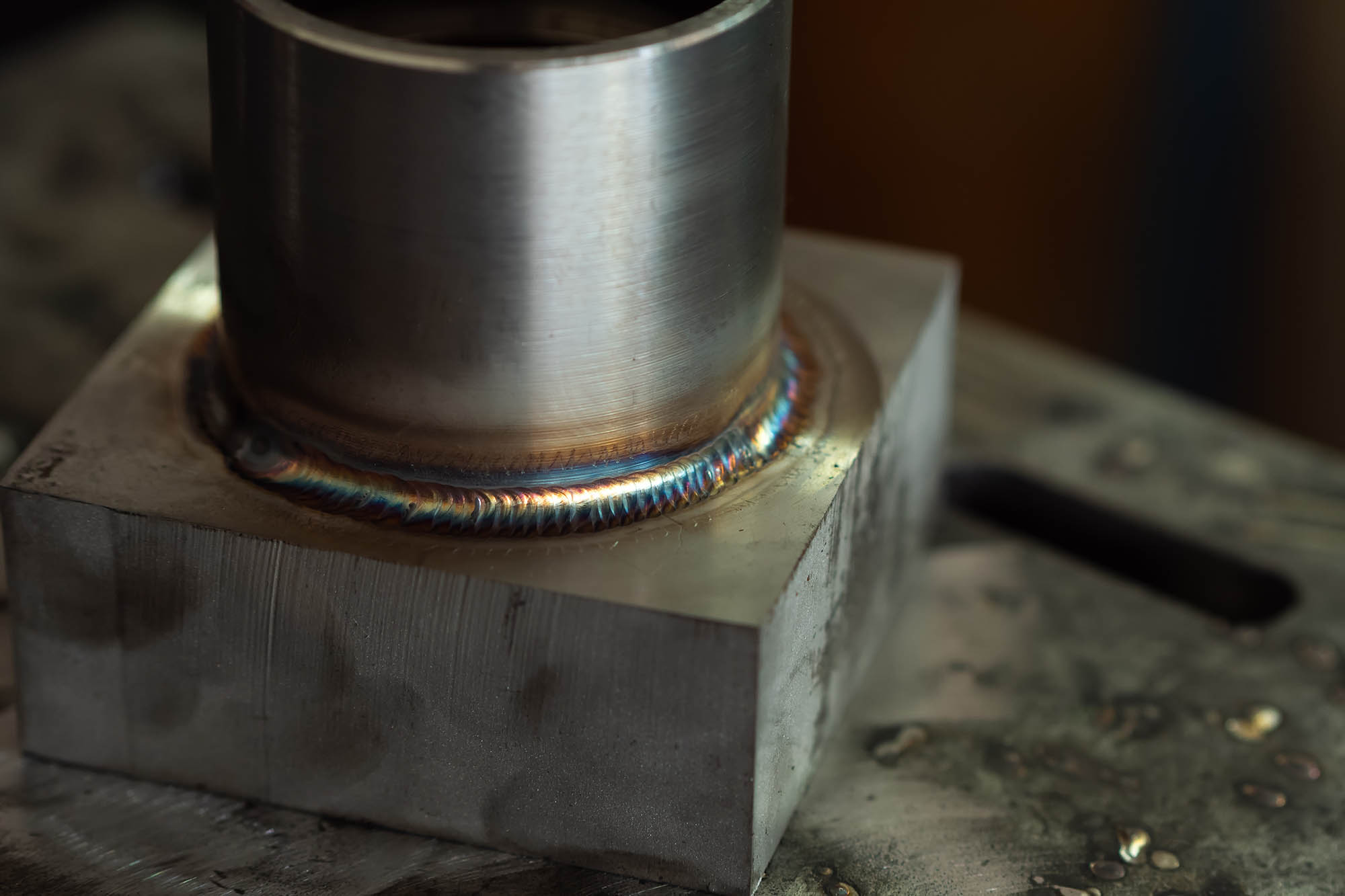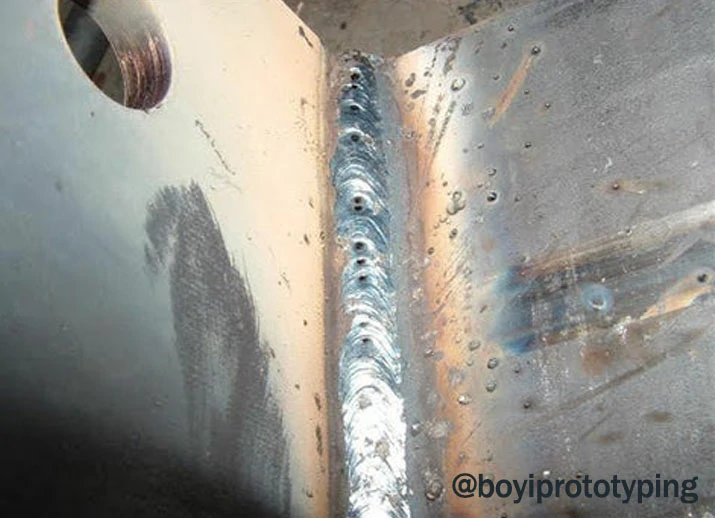What is Porosity in Welding: Essential Tips for Getting Flawless Welds
Wiki Article
Unwinding the Enigma of Porosity in Welding: Tips for Decreasing Issues and Maximizing Quality
In the intricate globe of welding, porosity stays a consistent difficulty that can substantially affect the high quality and honesty of bonded joints. Recognizing the elements that contribute to porosity formation is critical in the search of remarkable welds. By unwinding the mystery of porosity and executing efficient approaches for defect minimization, welders can boost the standards of their job to attain superior high quality results. As we explore the depths of porosity in welding, discovering the secrets to its avoidance and control will certainly be paramount for professionals seeking to grasp the art of high-grade weldments.Understanding Porosity in Welding
Porosity in welding, a common issue run into by welders, refers to the presence of gas pockets or voids in the bonded product, which can jeopardize the honesty and quality of the weld. These gas pockets are usually entraped during the welding process as a result of numerous factors such as incorrect securing gas, polluted base materials, or wrong welding criteria. The formation of porosity can compromise the weld, making it at risk to fracturing and rust, eventually leading to structural failings.Comprehending the root creates of porosity is vital for welders to properly stop its event. By identifying the significance of keeping appropriate gas shielding, ensuring the sanitation of base materials, and optimizing welding settings, welders can significantly lower the probability of porosity formation. In addition, using techniques like pre-heating the base material, using appropriate welding techniques, and conducting detailed evaluations post-welding can better aid in minimizing porosity flaws. Overall, a comprehensive understanding of porosity in welding is essential for welders to produce high-grade and resilient welds.

Common Causes of Porosity
When inspecting welding procedures for possible high quality problems, understanding the usual reasons for porosity is necessary for preserving weld stability and protecting against structural failings. Porosity, defined by the presence of dental caries or spaces in the weld metal, can significantly jeopardize the mechanical properties of a bonded joint. One usual root cause of porosity is incorrect securing gas insurance coverage. Inadequate protecting gas circulation prices or inappropriate gas mixtures can lead to climatic contamination, causing porosity development.
One more common cause of porosity is the presence of moisture and impurities on the surface area of the base steel or filler product. When welding materials are not properly cleansed or are subjected to high levels of moisture, the vaporization of these contaminants throughout welding can create gaps within the weld bead. In addition, welding at inappropriate parameters, such as excessively high traveling speeds or currents, can create too much disturbance in the weld pool, capturing gases and triggering porosity. By attending to these typical causes through correct gas securing, material prep work, and adherence to ideal welding specifications, welders can minimize porosity and boost the quality of their welds.
Strategies for Porosity Prevention
Implementing reliable preventive actions is crucial in minimizing the event of porosity in welding processes. One strategy for porosity prevention is making certain appropriate cleaning of the base metal prior to welding. Pollutants such as oil, oil, corrosion, and paint can bring about porosity, so extensive cleaning utilizing suitable solvents or mechanical approaches is necessary.
Making use of high-quality filler products and protecting gases that are appropriate for the base steel and welding procedure can substantially minimize the threat of porosity. In addition, keeping correct welding criteria, such as voltage, current, travel speed, and gas circulation price, is essential for porosity avoidance.
Moreover, utilizing appropriate welding techniques, such as keeping a constant travel speed, electrode angle, and arc size, can assist prevent porosity (What is Porosity). Ample training of welders to ensure they follow best methods and quality control procedures is likewise important in minimizing porosity defects in welding

Ideal Practices for Top Quality Welds
Making sure adherence to industry requirements and proper weld this hyperlink joint preparation are basic elements of achieving constantly top notch welds. In enhancement to these fundamental steps, there are a number of finest methods that welders can carry out to even more improve the top quality of their welds. One key method is keeping proper sanitation in the welding area. Impurities such as oil, grease, corrosion, and paint can negatively impact the quality of the weld, bring about defects. Thoroughly cleansing the workpiece and surrounding location prior to welding can assist reduce these concerns.One more best technique is to carefully choose the appropriate welding criteria for the certain materials being signed up with. This includes setting the proper voltage, existing, take a trip speed, and securing gas circulation rate. Correct specification option makes certain ideal weld penetration, blend, and overall quality. Furthermore, using high-grade welding consumables, such as electrodes and filler steels, can significantly influence the last weld top quality. Spending in costs consumables can cause more powerful, a lot more sturdy welds with less problems. By complying with these ideal practices, welders can consistently create premium welds that fulfill market criteria and go beyond consumer expectations.
Relevance of Porosity Control
Porosity control plays a crucial duty in guaranteeing the honesty and top quality of welding joints. Porosity, characterized by the presence of dental caries or gaps within the weld metal, can considerably compromise the mechanical residential or commercial properties and structural honesty of the weld. Excessive porosity weakens the weld, making it more vulnerable to splitting, corrosion, and total failing under operational lots.Reliable porosity control is necessary for preserving the desired mechanical buildings, such as stamina, ductility, and toughness, of the bonded joint. What is Porosity. By reducing porosity, welders can boost the overall quality and integrity of the weld, making sure that it satisfies the performance demands of the designated application
Moreover, porosity control is important for achieving the wanted aesthetic look of the weld. Extreme porosity not just compromises the weld but additionally takes away from its visual allure, which can be important in markets where aesthetic appeals are essential. Correct porosity control methods, such as making use of the right shielding gas, regulating the welding specifications, and ensuring correct cleanliness of the base products, are vital for producing top quality welds with very little you could try here flaws.

Verdict
Finally, view it porosity in welding is a typical defect that can compromise the top quality of the weld. By comprehending the sources of porosity and carrying out correct prevention methods, welders can minimize flaws and achieve greater quality welds. It is important to manage porosity in welding to ensure the integrity and stamina of the end product. Applying finest methods for porosity control is essential for accomplishing optimum welding results.Report this wiki page